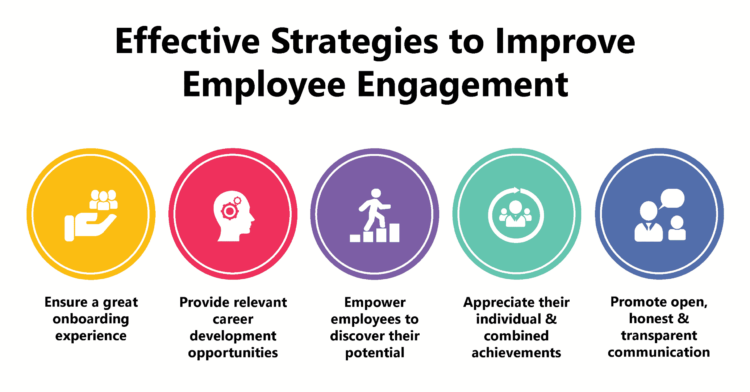The Ultimate Guide to Business Productivity: Strategies, Tools, and Best Practices

Loading...

Business productivity serves as the cornerstone of modern enterprise success, fundamentally determining how efficiently organizations transform resources into valuable outcomes. In today's competitive landscape, business productivity isn't just about working harder—it's about working smarter through strategic implementation of proven methodologies, cutting-edge tools, and optimized workflows. This comprehensive guide explores every aspect of business productivity, providing actionable insights that drive measurable results.
Understanding and implementing effective business productivity strategies enables companies to maximize their return on investment while creating sustainable competitive advantages. Organizations that prioritize business productivity consistently outperform their competitors through enhanced efficiency, reduced operational costs, and improved employee satisfaction. The principles of business productivity extend across all business functions, from strategic planning to daily operations.

Business productivity represents the efficiency ratio between outputs generated and inputs consumed within an organizational context. This fundamental concept encompasses how effectively businesses utilize their resources—including human capital, financial assets, technological infrastructure, and time—to achieve strategic objectives. Business productivity measurement provides critical insights into operational effectiveness and identifies opportunities for improvement across all organizational levels.
The significance of business productivity extends beyond simple efficiency metrics to encompass comprehensive organizational health indicators. Companies with high business productivity levels typically demonstrate superior financial performance, enhanced employee engagement, and stronger market positioning. These organizations create value more effectively, enabling reinvestment in innovation, talent development, and market expansion initiatives that fuel long-term growth.
Modern business productivity encompasses multiple interconnected dimensions that collectively determine organizational effectiveness. Financial productivity measures how efficiently companies convert investments into revenue and profit, while operational productivity focuses on process efficiency and resource utilization. Human productivity evaluates how effectively teams contribute to organizational goals through their skills, motivation, and collaborative capabilities.
Strategic business productivity involves aligning daily operations with long-term objectives, ensuring that short-term efficiency gains support sustainable growth. This holistic approach to business productivity recognizes that sustainable improvements require coordinated efforts across all organizational functions, from leadership decision-making to frontline execution.

Exceptional business productivity builds upon six fundamental pillars that create a comprehensive framework for organizational excellence. These pillars provide structured approaches to enhancing business productivity while ensuring sustainable improvements that drive long-term success.
Effective time management forms the foundation of business productivity by ensuring that valuable resources focus on high-impact activities. Strategic time management involves implementing systematic approaches to task prioritization, resource allocation, and deadline management. Organizations with superior business productivity typically employ structured methodologies like the Eisenhower Matrix, which categorizes tasks based on urgency and importance levels.
The Pareto Principle, commonly known as the 80/20 rule, provides powerful insights for business productivity optimization. This principle suggests that approximately 80% of results come from 20% of efforts, highlighting the importance of identifying and focusing on high-value activities. Companies that apply this principle to their business productivity strategies consistently achieve better outcomes with less resource expenditure.
Time blocking represents another crucial time management technique that enhances business productivity by creating dedicated periods for specific activities. This approach minimizes context switching, reduces distractions, and enables deeper focus on important tasks. Organizations implementing time blocking typically report significant improvements in business productivity metrics and employee satisfaction levels.
Workflow optimization directly impacts business productivity by eliminating inefficiencies, reducing waste, and streamlining operations. This pillar focuses on analyzing existing processes to identify bottlenecks, redundancies, and opportunities for improvement. Lean methodology principles provide structured approaches to workflow optimization that enhance business productivity while maintaining quality standards.
Process mapping serves as a fundamental tool for business productivity improvement by visualizing current workflows and identifying optimization opportunities. This technique helps organizations understand how work flows through their systems, revealing hidden inefficiencies that impact overall business productivity. Companies that regularly conduct process mapping exercises typically achieve substantial improvements in operational efficiency.
Automation plays an increasingly important role in modern business productivity strategies by handling repetitive tasks and freeing human resources for higher-value activities. Robotic Process Automation (RPA) and workflow automation tools can significantly enhance business productivity by reducing manual effort, minimizing errors, and accelerating task completion times.

Communication effectiveness directly influences business productivity by determining how efficiently information flows throughout organizations. Clear, concise communication reduces misunderstandings, accelerates decision-making, and enables faster problem resolution. Organizations with superior business productivity typically implement structured communication protocols that ensure consistent information sharing.
Modern collaboration tools significantly impact business productivity by enabling seamless teamwork regardless of geographical location or time zones. Platforms like Microsoft Teams, Slack, and Asana facilitate real-time collaboration while maintaining project visibility and accountability. These tools enhance business productivity by reducing email overload, centralizing project information, and streamlining team coordination.
Meeting optimization represents a critical component of communication-based business productivity improvement. Effective meetings have clear agendas, defined objectives, and specific time limits that respect participants' schedules. Organizations that implement structured meeting protocols typically report improved business productivity through better decision-making and reduced time waste.
Technology integration serves as a powerful catalyst for business productivity enhancement by automating routine tasks, improving data accuracy, and enabling scalable operations. Strategic technology adoption involves selecting tools that align with organizational objectives and integrate seamlessly with existing systems. Companies that successfully leverage technology for business productivity gain significant competitive advantages.
Customer Relationship Management (CRM) systems exemplify how technology can enhance business productivity by centralizing customer information, automating sales processes, and providing actionable insights. These platforms enable sales teams to focus on relationship building rather than administrative tasks, directly improving business productivity metrics and revenue generation.
Project management software plays a crucial role in modern business productivity strategies by providing visibility into project status, resource allocation, and timeline management. Tools like Asana, Trello, and Monday.com enable teams to collaborate more effectively while maintaining accountability and transparency. Organizations using these platforms typically report significant improvements in project completion rates and overall business productivity.
Employee engagement directly correlates with business productivity levels, as motivated team members consistently deliver higher-quality work and demonstrate greater innovation. Effective delegation strategies empower employees by providing autonomy while maintaining accountability, creating environments where business productivity can flourish. Organizations that prioritize employee empowerment typically achieve superior business productivity outcomes.
Continuous learning and development programs enhance business productivity by ensuring that employees possess current skills and knowledge. Training investments pay dividends through improved performance, reduced errors, and increased innovation. Companies that maintain robust learning cultures consistently demonstrate higher business productivity levels compared to their competitors.
Feedback mechanisms play a vital role in business productivity improvement by providing employees with regular performance insights and growth opportunities. Constructive feedback helps individuals understand how their contributions impact overall business productivity while identifying areas for professional development.

Successful business productivity implementation requires systematic approaches that address organizational culture, process optimization, and technology integration. These practical strategies provide roadmaps for achieving sustainable business productivity improvements while maintaining quality standards and employee satisfaction.
Time blocking emerges as one of the most effective techniques for improving individual and team business productivity. This approach involves allocating specific time periods for particular activities, reducing multitasking and enabling deeper focus. Organizations implementing time blocking typically report 25-40% improvements in task completion rates and overall business productivity metrics.
The Pomodoro Technique provides structured intervals for focused work followed by brief breaks, optimizing mental energy and maintaining sustainable business productivity levels. This method involves 25-minute focused work sessions followed by 5-minute breaks, with longer breaks every four cycles. Teams using this technique often experience improved concentration and reduced fatigue.
Priority matrix implementation helps organizations focus resources on high-impact activities that drive business productivity. This tool categorizes tasks based on urgency and importance, ensuring that critical activities receive appropriate attention while routine tasks are handled efficiently.
Lean principles provide comprehensive frameworks for business productivity improvement through waste elimination and process optimization. These methodologies focus on value creation while minimizing non-productive activities that drain resources without contributing to organizational objectives. Companies implementing lean principles typically achieve 15-30% improvements in operational efficiency.
Value stream mapping offers detailed analysis of current processes to identify optimization opportunities that enhance business productivity. This technique visualizes how work flows through organizational systems, revealing bottlenecks and inefficiencies that impact overall performance. Organizations using value stream mapping often discover significant improvement opportunities previously overlooked.
Automation implementation strategies focus on identifying repetitive tasks that can be handled by technology, freeing human resources for higher-value activities. This approach to business productivity improvement requires careful analysis of current processes and strategic technology selection to maximize return on investment.
Asynchronous communication strategies enhance business productivity by reducing meeting frequency while maintaining information flow. This approach allows team members to contribute when they're most productive rather than being constrained by rigid scheduling requirements. Organizations implementing asynchronous communication often report improved work-life balance and enhanced productivity.
Collaboration platform optimization involves selecting and configuring tools that support team productivity while minimizing learning curves and technical barriers. Effective implementation requires user training, clear usage guidelines, and ongoing support to ensure maximum business productivity benefits.
Meeting efficiency protocols establish clear guidelines for when meetings are necessary, who should participate, and how they should be conducted. These standards help organizations maintain high business productivity levels by preventing unnecessary interruptions while ensuring effective communication when face-to-face interaction is required.

Effective business productivity measurement requires comprehensive metrics that capture both quantitative performance indicators and qualitative organizational health factors. These measurement systems provide insights into current productivity levels while identifying opportunities for continuous improvement. Organizations with robust measurement frameworks typically achieve more sustainable business productivity gains.
Revenue per employee represents a fundamental business productivity metric that indicates how effectively organizations utilize human capital. This measure provides insights into overall efficiency and enables benchmarking against industry standards. Companies with superior business productivity typically demonstrate above-average revenue per employee ratios compared to their competitors.
Output per hour worked measures the efficiency of time utilization across organizational functions. This metric helps identify areas where business productivity improvements can have the most significant impact. Organizations tracking this indicator often discover optimization opportunities in unexpected areas of their operations.
Project completion rates provide insights into organizational ability to deliver commitments on schedule and within budget. This business productivity indicator reflects planning effectiveness, resource allocation efficiency, and team execution capabilities. Companies with high project completion rates typically demonstrate superior business productivity across multiple dimensions.
Customer satisfaction scores correlate strongly with business productivity levels, as efficient operations typically result in better customer experiences. This metric provides external validation of internal productivity improvements while identifying areas where enhanced efficiency can improve customer relationships.
Data-driven decision making enhances business productivity by providing objective insights into operational performance and improvement opportunities. Advanced analytics platforms can identify patterns and trends that human analysis might miss, enabling more targeted productivity enhancement initiatives.
Predictive analytics applications help organizations anticipate productivity challenges before they impact performance. These tools analyze historical data to identify potential bottlenecks, resource constraints, and optimization opportunities. Companies using predictive analytics for business productivity often achieve proactive rather than reactive improvement strategies.
Real-time monitoring systems provide immediate feedback on business productivity metrics, enabling rapid response to performance variations. These platforms help organizations maintain consistent productivity levels while quickly addressing emerging challenges that could impact overall performance.
Organizations face various challenges that can undermine business productivity efforts, from technological limitations to cultural resistance. Understanding these obstacles and implementing targeted solutions enables companies to achieve sustainable productivity improvements while maintaining employee satisfaction and operational quality.
Inadequate technology infrastructure represents a significant barrier to business productivity improvement. Legacy systems often create bottlenecks that prevent organizations from achieving optimal efficiency levels. Strategic technology modernization initiatives can address these limitations while providing platforms for future productivity enhancements.
Software integration challenges can fragment workflows and reduce business productivity by forcing employees to navigate multiple disconnected systems. Comprehensive integration strategies that connect various business tools can significantly enhance productivity by creating seamless information flow and reducing manual data entry requirements.
Training and adoption barriers prevent organizations from realizing the full benefits of productivity-enhancing technologies. Comprehensive training programs and change management initiatives help ensure that technological investments translate into measurable business productivity improvements.
Resistance to change represents one of the most significant obstacles to business productivity improvement. Cultural transformation initiatives that emphasize the benefits of productivity enhancements while addressing employee concerns can help organizations overcome this resistance and achieve sustainable improvements.
Communication gaps between different organizational levels can undermine business productivity initiatives by creating misalignment and confusion. Structured communication protocols and regular feedback mechanisms help ensure that productivity improvement efforts receive proper support and understanding throughout the organization.
Resource allocation challenges can prevent organizations from investing adequately in business productivity improvement initiatives. Strategic planning processes that prioritize productivity investments based on potential return on investment can help organizations overcome resource constraints while achieving meaningful improvements.

The landscape of business productivity continues evolving rapidly as new technologies, methodologies, and organizational models emerge. Understanding these trends helps organizations prepare for future productivity opportunities while maintaining competitive advantages in dynamic market conditions.
Artificial intelligence integration represents the next frontier in business productivity enhancement, offering capabilities that far exceed traditional automation approaches. AI-powered systems can analyze complex data patterns, make sophisticated decisions, and continuously optimize processes without human intervention. Organizations implementing AI for business productivity typically achieve substantial efficiency gains while freeing human resources for strategic activities.
Machine learning applications enable predictive productivity optimization by analyzing historical performance data to identify improvement opportunities. These systems can recommend process adjustments, resource reallocations, and timing optimizations that enhance overall business productivity. Companies using machine learning for productivity enhancement often achieve more precise and effective optimization strategies.
Intelligent automation combines AI decision-making capabilities with robotic process automation to handle complex workflows that previously required human intervention. This technology significantly enhances business productivity by managing end-to-end processes while adapting to changing conditions and requirements.
Distributed workforce management has become essential for business productivity as remote and hybrid work models become permanent fixtures in organizational structures. Effective remote productivity strategies require new approaches to communication, collaboration, and performance management that maintain high productivity levels regardless of employee location.
Digital workspace optimization involves creating virtual environments that support seamless collaboration and communication among distributed teams. These platforms integrate various productivity tools to provide comprehensive digital workspaces that enable effective remote business productivity.
Performance measurement adaptation ensures that traditional productivity metrics remain relevant in distributed work environments while incorporating new indicators that reflect remote work effectiveness. Organizations successfully managing remote productivity typically develop hybrid measurement approaches that balance output quality with employee well-being.
Achieving exceptional business productivity requires comprehensive strategies that address technology, processes, people, and culture simultaneously. Organizations that successfully implement these approaches typically experience significant improvements in efficiency, profitability, and employee satisfaction while building sustainable competitive advantages.
The journey toward enhanced business productivity is ongoing, requiring continuous monitoring, adjustment, and improvement. Companies that maintain focus on productivity excellence while adapting to changing market conditions consistently outperform their competitors and achieve long-term success.
By implementing the strategies, tools, and best practices outlined in this guide, organizations can build robust business productivity frameworks that drive sustainable growth and success. The key lies in taking systematic approaches that align with organizational objectives while maintaining flexibility to adapt to evolving business requirements.
Looking for more email troubleshooting and management guidance? Check out these related articles:
Master team productivity with proven strategies, essential tools, and practical implementation tips. Learn how to boost your team's performance, enhance collaboration, and achieve exceptional results.
📖 Guides
Discover the best free business email providers in 2025. Compare Zoho Mail, ProtonMail, Gmail, and more. Step-by-step setup guide for professional email addresses without monthly costs.
📖 Guides
📧 Free business email
Master email security with our comprehensive guide. Learn about threats, solutions, best practices, and advanced protection strategies to safeguard your business communications.
📖 Guides